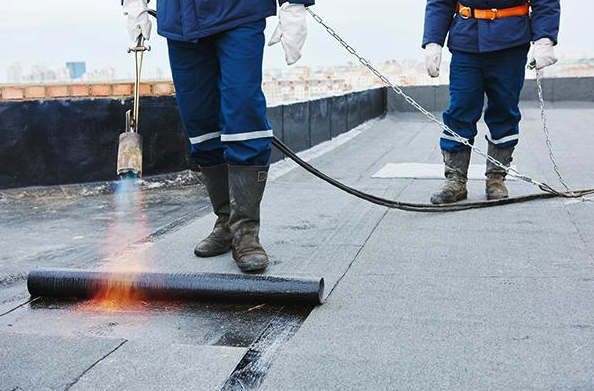All you need to know about roof waterproofing

All you need to know about roof waterproofing
As a homeowner, your primary concern is to ensure safety, protection and maintenance of the structural integrity of your home. A great place to begin with is the roof. The lifespan of the roof depends upon the area that you are located in. While, it is a given that exposure to various natural elements are subject to wear and tear, unexpected weather conditions may cause damage to a particular section of the roof.
Something as simple as a leak, that may not warrant too much attention at first, may lead to the growth of dangerous mold. Over time, it leakage and mold formation can cause the weakening of the entire structure of the house. To prevent such untoward conditions all you need to do is to take timely measure such as waterproofing of your roof to maintain the structural integrity of your home.
Today, there are many materials available for roof waterproofing. Over the past few years, liquid applied membranes have proven to be a economical and feasible solution. The most popular in this category are silicone, urethane, polyurethane etc. The advantage of these materials apart from the convenience and affordability is the fact that they provide the benefit of reflexive white colour. This can deflect the UV rays of the Sun and lower the temperature of the roof.
Types of waterproofing solutions
Now let us take a closer look at the different kind of waterproofing solutions.
Loose-laid waterproofing
Loose laid waterproofing system is the most popular of waterproofing solutions. This is because it is economical and convenient to install. It can be an ideal choice for vegetated roofs for protection.
Self-adhered waterproofing
This is a waterproofing solution, where the membrane directly bonds with concrete deck of the structure while increasing productivity and reducing installation time.
Grid waterproofing solution
As the name implies, the area to be waterproofed is marked out in the pattern of a grid. Each section therefore becomes an individual containment field.
Process of roof waterproofing
Now, let us take you step by step through the process of roof waterproofing. A typical application of liquid membrane (the most popular choice for roof waterproofing) consists of five main steps, namely cleaning, priming, details treatment, application of the main coat and finally the inspection.
Step one: Cleaning
All liquid membrane applications require superior adhesion for roof waterproofing. To ensure that there is flawless adhesion, proper cleaning of the substrate is the first step. In fact, it is as important as the actual application of the liquid membrane. A thorough cleaning eliminates what are called “bond breakers” in terms of liquid membrane adhesion.
Step two: Priming
Once the cleaning is over, the next step is priming. This too, plays an important role in adhesion. The existing roof may bleed bituminous oils through the liquid membrane, if the priming process is not completed thoroughly. One important thing to remember during the priming process is that the surface should be completely dry before putting on the primer. Professional roof waterproofing solutions providers use either torches or blowers to dry out the surface, before the primer is applied.
Step three: Treatment of details
Treatment of details such as corners, both on the exterior and interior, as well as wall to floor type corners, penetration of pipes, drains etc must be treated prior to the application of the liquid membrane. Although it may seem like a small part of the process, it demands special consideration. Materials used for coating/treating special parts of the roof.
Step four: Application of the liquid membrane
The next step in roof waterproofing is the actual application of the liquid membrane onto the roof. Most manufacturers of waterproofing solutions require the coating to be applied in two or more layers. Each coating product has different technical specifications. The method of application, temperature, substrate porosity are some factors that must be borne in mind during the application of the liquid membrane.
Step five: Inspection
This is arguably the most important step in the process of roof waterproofing. At any time during the application of the liquid membrane, such as during priming, detail treatment and the actual application of the liquid membrane a close watch is a must. Things may not go as planned at any stage. For instance, the lack of adequate material to cover the entire roof may lead to premature failing of the membrane. Similarly, too much of liquid product applied all at once will lead to uncured material underneath the skinned surface of the membrane. All such errors need to be rectified at the application stage. Thus, inspection is considered the most important part of the roof waterproofing process.
Overall strict compliance with the manufacturer’s instructions is an imperative. Opting for professional roof waterproofing services will ensure that there are no errors in the roof waterproofing process and ensure longevity of the membrane for long years.


